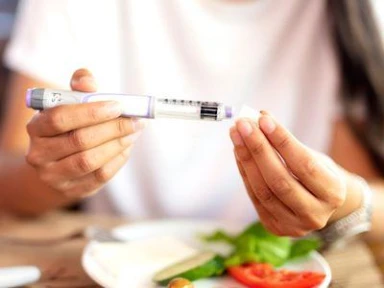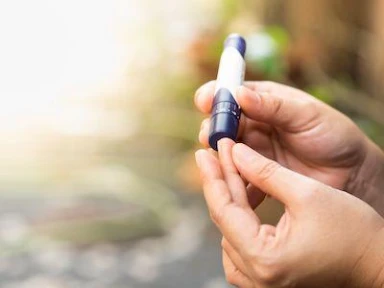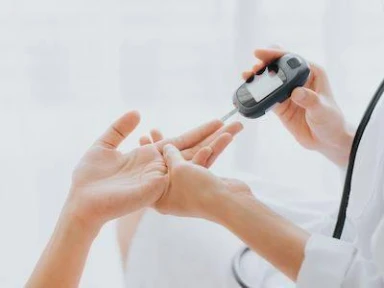Patient awareness and attainment of goals in Type 2 Diabetes Mellitus: A real-world survey
Key takeaway
In this real-world survey of physicians and their patients with T2DM:
- A total of 60.9% of patients did not achieve their HbA1c goal of 6.8% set by their physicians, with a mean distance of 0.9% from the goal.
- Physicians tended to wait before changing/adding pharmacologic agents until HbA1c was progressively higher (>8%), suggesting therapeutic inertia.
- Patients aware of their HbA1c goal had slightly greater adherence to antihyperglycemic medication; however, goal awareness did not enhance goal attainment.
A holistic diabetes management approach, involving patient education, and patient–physician communication and partnership is needed.
Why this matters
- Guidelines recommend HbA1c targets of <7% for most of the patients.
- However, in real-world clinical practice, individualized HbA1c goals can vary, and may be unattained.
- Patients’ knowledge of their individualized glycemic goal, its achievement and distance, and the HbA1c level for treatment intensification are not well understood.
Study design
Data was drawn from the Adelphi Diabetes Disease Specific ProgrammeTM and collected in Germany, Italy, Spain, UK, and USA between October 2018 and March 2019.
Patient Enrolment and Eligibility Criteria
- Participating physicians enrolled the next 10 consulting patients with T2DM meeting the following eligibility criteria:
- Patients ≥18 years of age, not in a clinical trial, receiving ≥1 AHA
- 2 additional patients treated with either a SGLT2i or a GLP-1 RA, or both*
Survey Questionnaires
- Physicians: Patient demographics, tests performed, HbA1c goal, comorbid conditions, and current and previous treatment including HbA1c at initiation
- Patients: Demographics and current condition; information on medication adherence using the ARMS-D; awareness of HbA1c goal (sub-analysis assessment)
Patient Inclusion Criteria
Diagnosed for ≥3 months with T2DM and had physician-reported current and target HbA1c
Key results
A total of 730 physicians (primary care physicians: 58%; diabetologists/ endocrinologists: 42%) provided data on 5,331 eligible patients with T2DM.
Patient Details
| Patient parameters | Proportion of patients |
| Males / Females | 55.0% / 45.0% |
| Median (IQR) duration of Diabetes | 4.7 (2.0–9.6) years |
| Mean (SD) individualized HbA1c goal | 6.8% (0.7%) |
| Attainment of HbA1c goal | 39.1% |
| Mean Distance (SD) from individualized HbA1c goal† | 0.9% (1.0%) |
|
Patients’ HbA1c for progression of Antihyperglycemic therapy |
>8% |
Sub-Analysis
Of 5,331 patients included, 48.0% patients qualified for the sub-analysis.
- 70.5% patients were aware of their HbA1c goal
- However, only 39.2% patients were successful in achieving their goal.
- Achieving HbA1c goal had no relation to knowledge of goal.
- Physicians were not satisfied with the current blood glucose level of about one third of the patients.
Physicians were more satisfied with the current blood glucose level of patients aware of their HbA1c goal in the sub-analysis vs the excluded patients not aware of their HbA1c goal (58.4% vs. 49.0% [P <0.0001])
Patients aware vs unaware of their HbA1c goals
| Parameters assessed | Patients aware of goal (n = 1,804) | Patients unaware of goal (n = 746) | P value |
| Achievement of HbA1c goal | 38.2% | 41.4% | P = 0.143 |
| Adherence to AHAs (ARMS-D total score) | 14.8 | 15.5 | P <0.0001 |
| Prescription of more AHAs | 68.4% | 55.0% | P <0.0001 |
| Patients on second- or later line of therapy | 53.3% | 44.8% | NA |
| Likely to test blood glucose levels | 74.1% | 54.6% | P <0.0001 |
| Physicians’ belief of better glucose control achievement | 34.2% | 28.2% | P = 0.003 |
Key limitations
- Non-random sample of physicians caused over-representation of specialists.
- Potential differences between physicians’ knowledge level and diabetes management might have affected patient treatment and clinical outcomes.
- Patient population was not truly random due to the inclusion of next 10 consecutive consulting patients, and 2 additional patients on SGLT2i/GLP-1 RA therapy.
- Analysis excluded 39.4% of patients with no current HbA1c/individualized HbA1c goals, or those with T2DM for <3 months.
- Study findings might have been affected by country variations in clinical practice.
* Either alone or in combination with other AHAs
† Among those patients not reaching their individualized HbA1c goal
AHAs, antihyperglycemic agents; ARMS-D, Adherence to Refills and Medicines Scale for Diabetes; GLP-1 RA, glucagon-like peptide 1 receptor antagonist; HbA1c, glycated hemoglobin A1c; IQR, interquartile range; SD, standard deviation; SGLT2i, sodium glucose cotransporter 2 inhibitor; T2DM, type 2 diabetes mellitus.
- Lautsch D, Boggs R, Wang T, Gonzalez C, Milligan G, Rajpathak S, et al. Individualized HbA1c goals, and patient awareness and attainment of goals in type 2 diabetes mellitus: A real-world multinational survey. Adv Ther. 2021:1–17. doi: 10.1007/s12325-021-01985-3. Epub ahead of print. PMID: 34951678.

.png/jcr:content/Diabetes%20Science%20(1).png)


